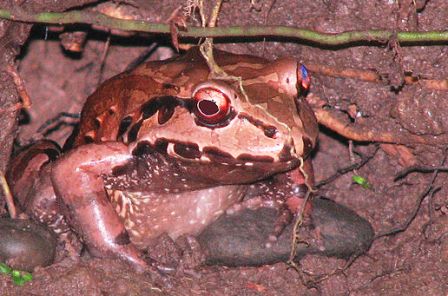Seismic Frogs
Psalm 65:6-7
“Which by his strength setteth fast the mountains; [being] girded with power: Which stilleth the noise of the seas, the noise of their waves, and the tumult of the people.”
The male white-lipped frog of Puerto Rico communicates using more than a variety of sounds. The frog also sends seismic signals through the ground. Researchers studying the frog have learned that it is more sensitive to seismic signals than any other creature.
 The male white-lipped frog communicates using chirps, chuckles and thumps on the ground. The male begins to establish his territory by sending out a rapid stream of chirps. When he is sitting on the mud, each chirp begins with a thud. The thud is a thump on the ground that is strong enough to travel for some distance. It’s thought that he does this by inflating his throat pouch so rapidly that it thumps on the ground, setting up a seismic wave.
The male white-lipped frog communicates using chirps, chuckles and thumps on the ground. The male begins to establish his territory by sending out a rapid stream of chirps. When he is sitting on the mud, each chirp begins with a thud. The thud is a thump on the ground that is strong enough to travel for some distance. It’s thought that he does this by inflating his throat pouch so rapidly that it thumps on the ground, setting up a seismic wave.
The thump is an important part of the frog’s territorial strategy. While his chirps tell other males his direction, they don’t let the others know how far away he is. However, the seismic wave travels through the ground at a different speed than the chirp travels through the air. This difference allows the other males to know both the distance and direction of the male by the different times at which they hear the thump and the chirp. The other males respond to the chirps and thumps with longer sounds called chuckles.
Who taught the frog this complicated, but precise system? Who taught him how to measure distance by using both airborne and seismic waves? Only our wise Creator could have done this.
Prayer:
Thank You, Lord, for the many surprising ways Your creation shows forth Your wisdom and power. Help me to more clearly see and appreciate the wonderful things with which You have filled the creation. Amen.
Notes:
Photo: Mexican white-lipped frog. Courtesy of D. Gordon E. Robertson. Licensed under the Creative Commons Attribution-Share Alike 3.0 Unported license.